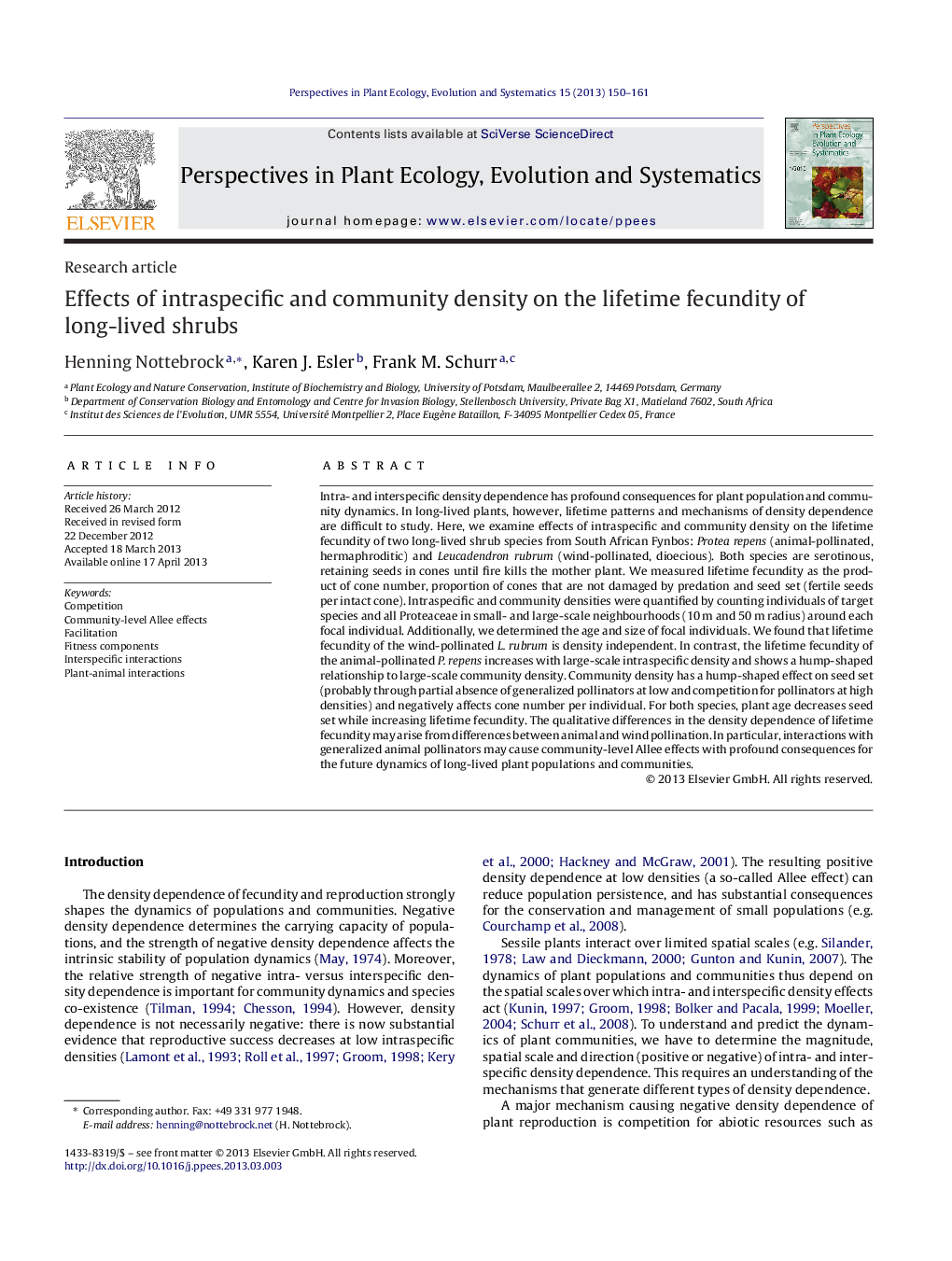| کد مقاله | کد نشریه | سال انتشار | مقاله انگلیسی | نسخه تمام متن |
|---|---|---|---|---|
| 6305736 | 1307050 | 2013 | 12 صفحه PDF | دانلود رایگان |
عنوان انگلیسی مقاله ISI
Effects of intraspecific and community density on the lifetime fecundity of long-lived shrubs
ترجمه فارسی عنوان
اثرات تراکم درون فردی و جامعه در باروری زندگی بوته های دراز مدت
دانلود مقاله + سفارش ترجمه
دانلود مقاله ISI انگلیسی
رایگان برای ایرانیان
کلمات کلیدی
موضوعات مرتبط
علوم زیستی و بیوفناوری
علوم کشاورزی و بیولوژیک
بوم شناسی، تکامل، رفتار و سامانه شناسی
چکیده انگلیسی
Intra- and interspecific density dependence has profound consequences for plant population and community dynamics. In long-lived plants, however, lifetime patterns and mechanisms of density dependence are difficult to study. Here, we examine effects of intraspecific and community density on the lifetime fecundity of two long-lived shrub species from South African Fynbos: Protea repens (animal-pollinated, hermaphroditic) and Leucadendron rubrum (wind-pollinated, dioecious). Both species are serotinous, retaining seeds in cones until fire kills the mother plant. We measured lifetime fecundity as the product of cone number, proportion of cones that are not damaged by predation and seed set (fertile seeds per intact cone). Intraspecific and community densities were quantified by counting individuals of target species and all Proteaceae in small- and large-scale neighbourhoods (10Â m and 50Â m radius) around each focal individual. Additionally, we determined the age and size of focal individuals. We found that lifetime fecundity of the wind-pollinated L. rubrum is density independent. In contrast, the lifetime fecundity of the animal-pollinated P. repens increases with large-scale intraspecific density and shows a hump-shaped relationship to large-scale community density. Community density has a hump-shaped effect on seed set (probably through partial absence of generalized pollinators at low and competition for pollinators at high densities) and negatively affects cone number per individual. For both species, plant age decreases seed set while increasing lifetime fecundity. The qualitative differences in the density dependence of lifetime fecundity may arise from differences between animal and wind pollination. In particular, interactions with generalized animal pollinators may cause community-level Allee effects with profound consequences for the future dynamics of long-lived plant populations and communities.
ناشر
Database: Elsevier - ScienceDirect (ساینس دایرکت)
Journal: Perspectives in Plant Ecology, Evolution and Systematics - Volume 15, Issue 3, 20 June 2013, Pages 150-161
Journal: Perspectives in Plant Ecology, Evolution and Systematics - Volume 15, Issue 3, 20 June 2013, Pages 150-161
نویسندگان
Henning Nottebrock, Karen J. Esler, Frank M. Schurr,
